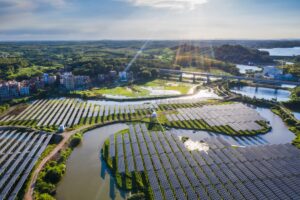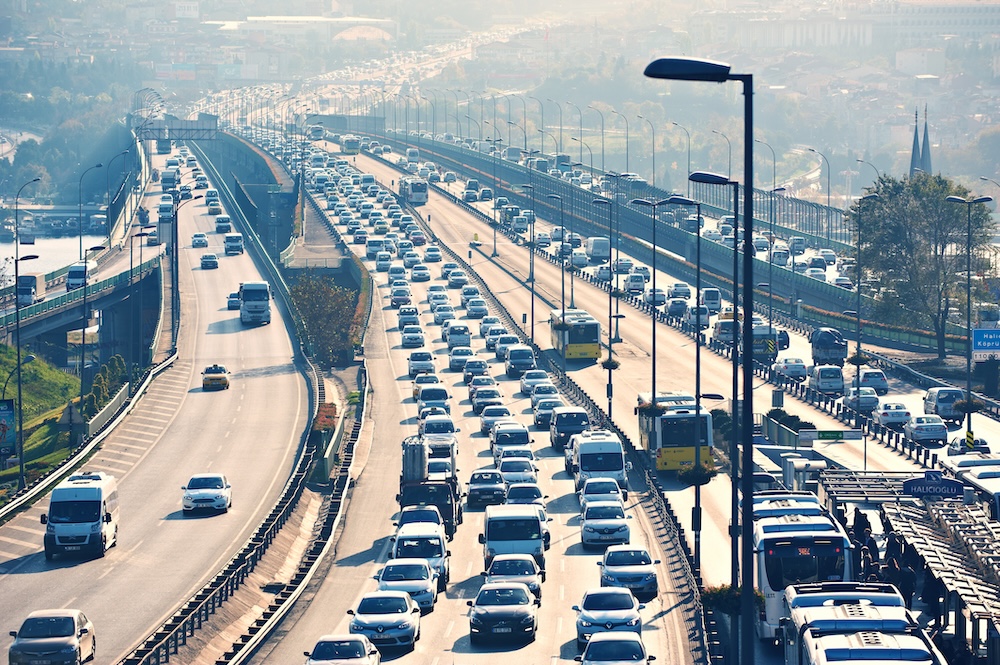The Invisible Impact of Daily Traffic
We rarely question our daily commutes, errands, or long drives — they’re simply part of life. But each mile driven contributes to a growing global crisis: traffic-related CO₂ emissions. While industry and agriculture often take the spotlight in climate discussions, traffic pollution is a persistent and underestimated force accelerating climate change. And with millions of vehicles on the road each day, the numbers add up quickly.
So, how bad is it? What role does traffic actually play in global emissions — and what can be done about it?
How Much CO₂ Does Traffic Actually Produce?
Transportation is one of the largest contributors to global greenhouse gas emissions. According to the International Energy Agency (IEA), the transport sector is responsible for about 24% of direct CO₂ emissions from fuel combustion, and road vehicles account for nearly three-quarters of that.
That means your car, your neighbor’s SUV, delivery vans, and buses — all together — are among the biggest culprits.
In the United States alone, the EPA estimates that passenger vehicles and light-duty trucks contribute nearly 58% of all transportation-related greenhouse gas emissions. Globally, CO₂ emissions from cars exceeded 4.6 gigatons in 2022 — a staggering figure equivalent to more than 9 trillion pounds of carbon dioxide.
Emissions by Vehicle Type
Passenger Cars
Passenger cars remain the most common form of transportation — and one of the largest sources of emissions. On average, a gasoline-powered car emits about 4.6 metric tons of CO₂ per year, depending on fuel efficiency and miles driven.
Trucks and SUVs
Heavier vehicles like trucks and SUVs have grown in popularity but come with a heavier carbon cost. These vehicles consume more fuel and emit more CO₂, often 20–30% more than standard passenger cars.
Commercial and Delivery Vehicles
The rise of e-commerce has led to a boom in delivery vehicles on the road. These vehicles may operate for long hours daily and contribute disproportionately to urban air pollution and traffic congestion.
Public Transit and Buses
While buses contribute emissions, they are more efficient per passenger compared to single-occupant vehicles. However, diesel-powered buses still emit considerable particulate matter and CO₂, particularly in older fleets.
Motorcycles and Scooters
Although smaller and often more fuel-efficient, motorcycles can emit more hydrocarbons and nitrogen oxides than cars, due to less stringent emissions controls in many countries.
Urban vs. Rural Emissions
City Traffic and Gridlock
In urban areas, emissions are exacerbated by idling engines, frequent stop-and-go traffic, and congestion. The result is higher per-mile emissions and significant air quality issues. Studies show that urban commuters can emit 20% more CO₂ due to time spent in traffic compared to rural drivers.
Additionally, the concentration of vehicles in cities leads to higher levels of ground-level ozone, particulate matter, and heat-trapping gases — worsening urban heat islands and respiratory conditions.
Rural Driving
While rural driving tends to involve fewer stops and more consistent speeds, the longer distances and higher reliance on personal vehicles — due to limited public transportation — still contribute significantly to total emissions.
The Carbon Cost of Commuting
A Look at the Daily Drive
The average American commute is around 16 miles one way, totaling over 32 miles per day. If driven in a vehicle that emits 404 grams of CO₂ per mile (the EPA average), that amounts to about 13,000 pounds of CO₂ per commuter annually — just from getting to and from work.
Multiply that by millions of workers, and traffic becomes not just an inconvenience, but a massive environmental liability.
Remote Work’s Role in Reduction
The rise of remote work during the COVID-19 pandemic showed a dramatic dip in traffic emissions. In April 2020, global CO₂ emissions dropped by 17%, largely due to reduced travel. While short-lived, this illustrated the power of behavior change.
Maintaining some level of flexible or hybrid work can drastically reduce traffic volume and its environmental impact.
The Bigger Picture: Traffic and Climate Change
Traffic emissions don’t just pollute local air — they accumulate in the atmosphere, driving global warming. Unlike natural CO₂ cycles, traffic emissions come from burning fossil fuels, releasing carbon that had been stored underground for millions of years. Once released, CO₂ can stay in the atmosphere for hundreds of years, continuing to trap heat long after the drive is over.
This means that every unnecessary trip, every idling car, every traffic jam contributes to a future of more heatwaves, rising sea levels, and climate instability.
Solutions and Strategies for Change
Smarter Urban Planning
Investing in bike lanes, pedestrian infrastructure, and efficient public transit can significantly reduce reliance on personal vehicles in cities. Congestion pricing, like that used in London or Stockholm, also helps lower vehicle counts and emissions in dense areas.
Transition to Electric Vehicles (EVs)
Electric vehicles produce no tailpipe emissions and, when powered by clean energy, have a much smaller carbon footprint. However, they still rely on energy-intensive battery production and rare earth mining — so EVs are not a perfect solution, but a much better one.
Encourage Remote and Hybrid Work
As mentioned, reducing commutes even by one or two days a week can drastically cut emissions across a company’s workforce. Employers and city planners should embrace this shift and encourage more flexible work structures.
Carpooling and Ridesharing
Shared rides reduce the number of cars on the road and are an easy entry point for individuals to cut emissions without sacrificing convenience.
Individual Behavior Shifts
Driving less, combining errands into fewer trips, avoiding idling, and maintaining your vehicle for optimal efficiency can all help reduce your personal carbon output.
Final Thoughts: A Planet Stuck in Traffic
Traffic isn’t just a source of frustration — it’s a climate threat hiding in plain sight. Every honk, brake light, and highway jam is part of a much larger story of carbon emissions and environmental decline.
But we’re not powerless. By rethinking how we move, commute, and design our cities, we can dramatically reduce one of the most persistent sources of pollution in modern life.
The next time you’re stuck in traffic, remember: the cost is more than time — it’s the climate.
Common Questions About Traffic and CO₂ Emissions
How much CO₂ does a car produce per mile?
On average, a gasoline vehicle emits about 404 grams of CO₂ per mile.
Which vehicle types pollute the most?
Heavy-duty trucks and SUVs tend to emit more CO₂ than smaller cars or electric vehicles.
Does traffic congestion increase emissions?
Yes, stop-and-go traffic and idling engines significantly increase per-mile CO₂ emissions.
What’s the best way to reduce traffic emissions?
Transitioning to electric vehicles, using public transit, walking or biking, and reducing overall travel are key strategies.
Can working from home really make a difference?
Absolutely. Even a single day working from home per week can cut thousands of pounds of CO₂ per person annually.









Reader Interactions